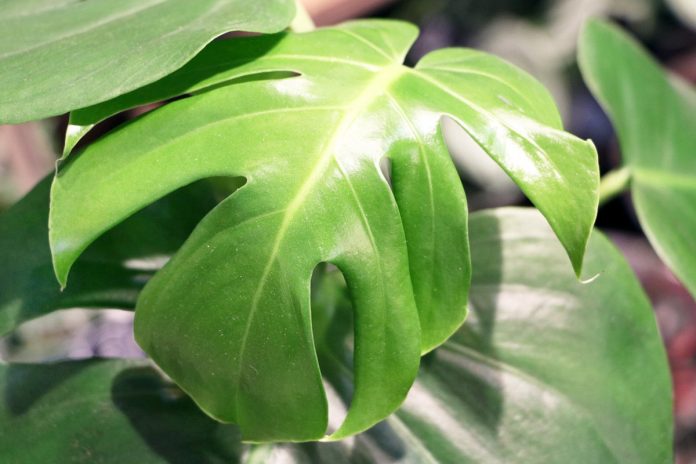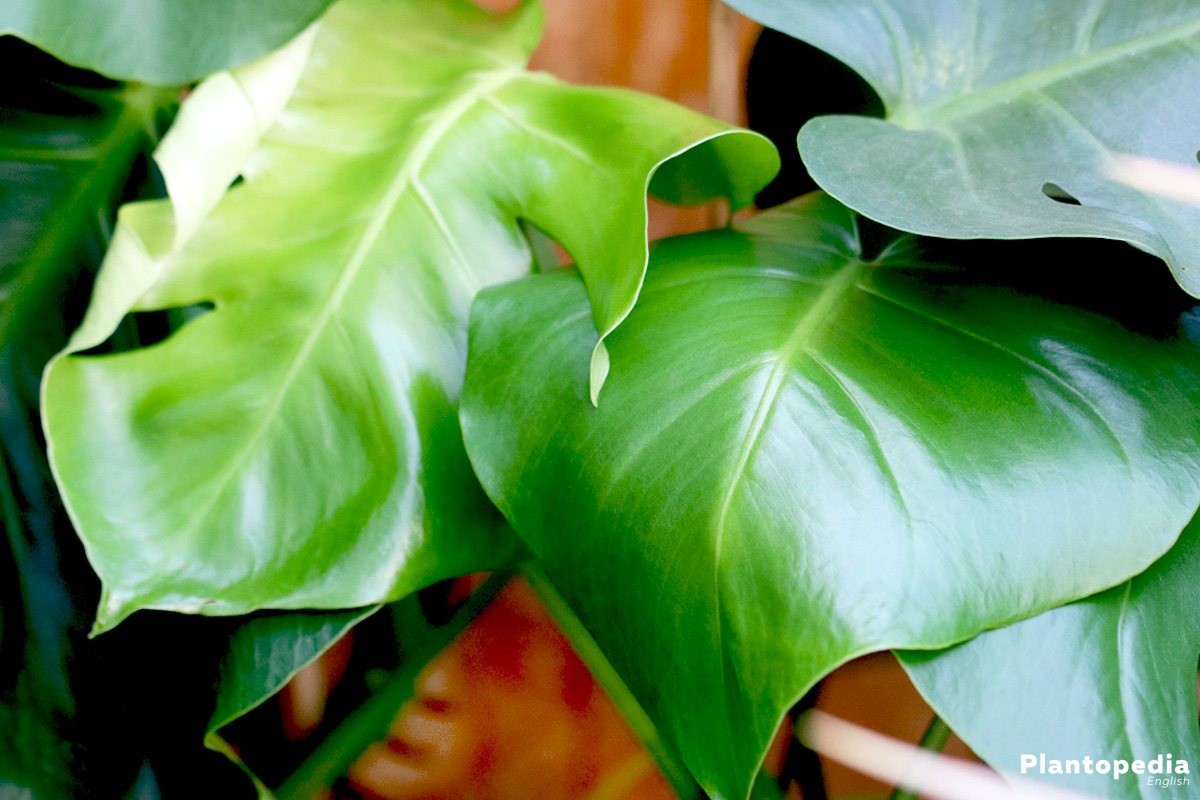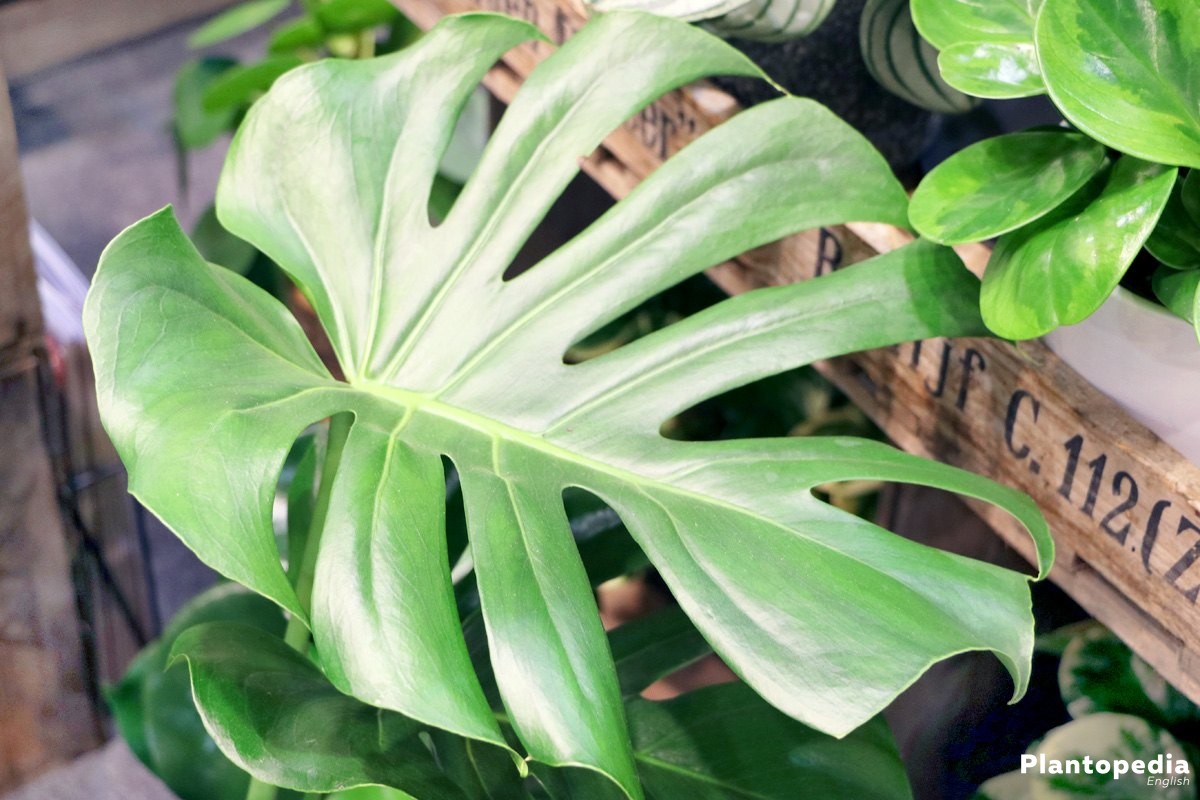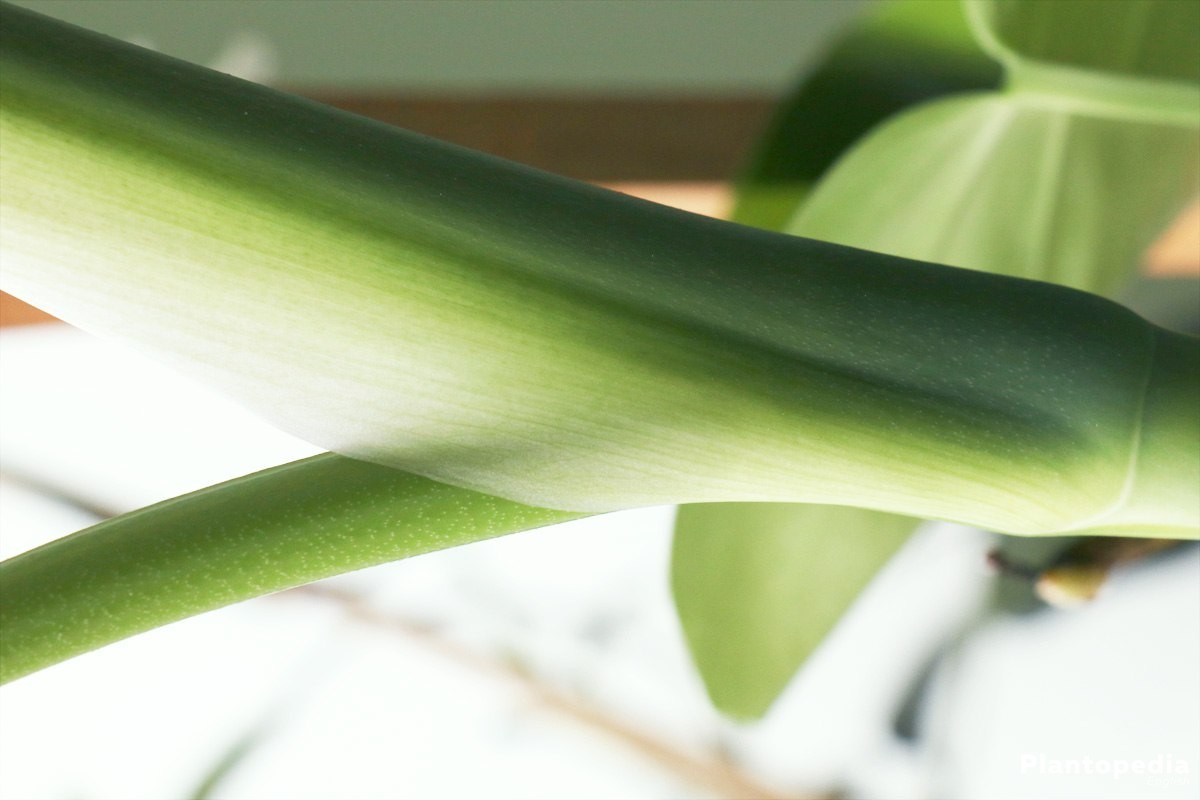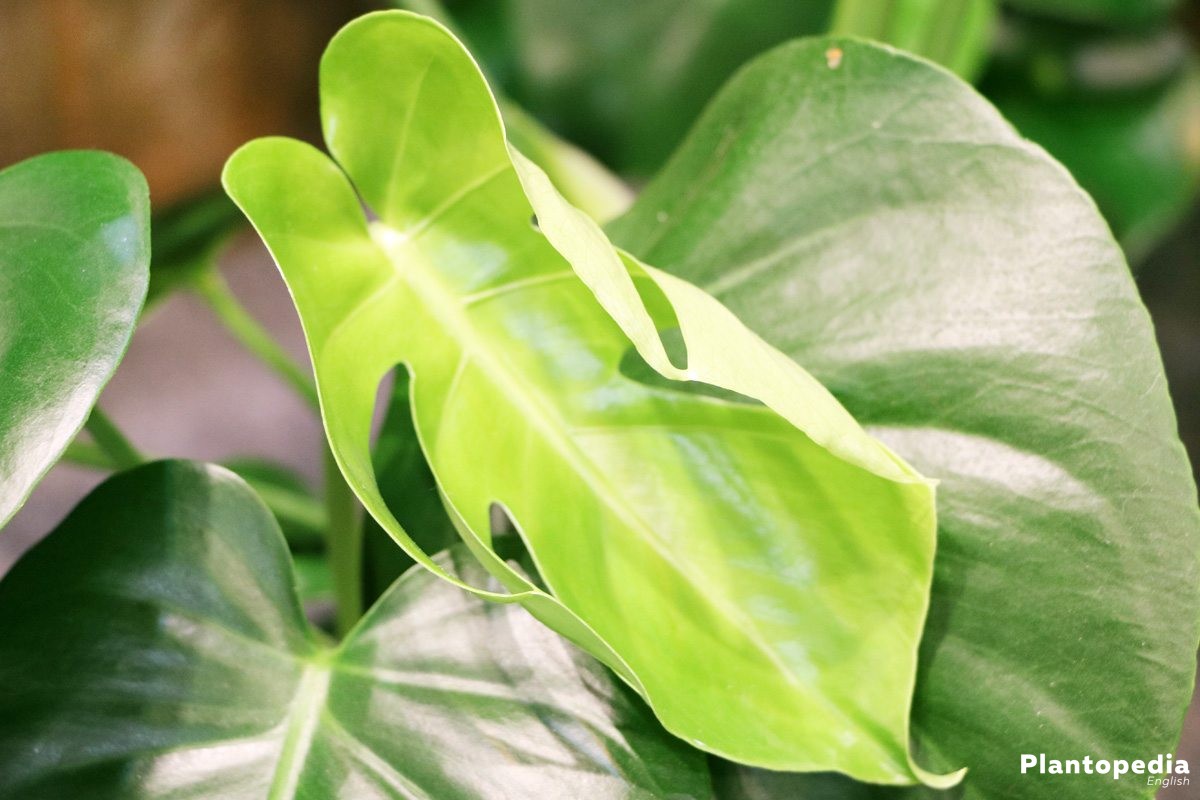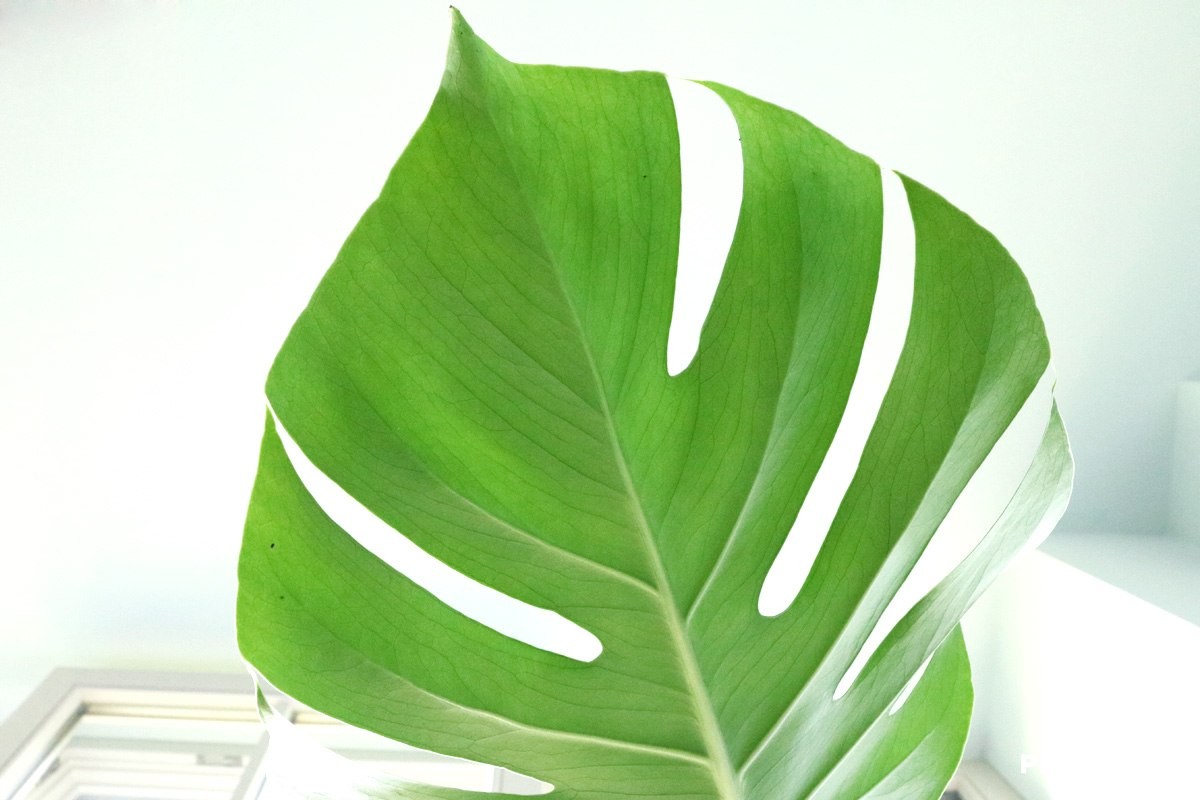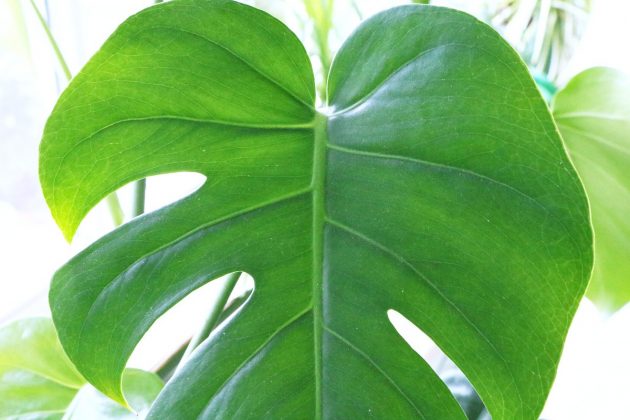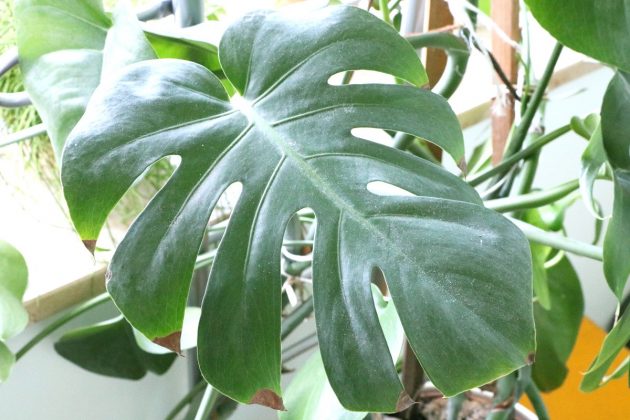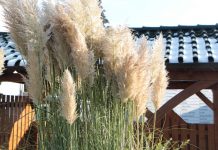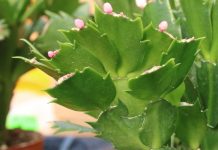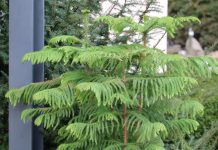With the Monstera deliciosa, nature presents a magnificent specimen, which is more commonly known as “Swiss Cheese Plant”. Its striking leaf structures and the white to delicate yellow flowers spread a tropical flair. It is said to be rather easy-care, even though it makes a certain degree of demands in order to thrive. Check the planting a care instructions to find out about these.
Plant Profile
Contents
- Plant family: Araceae
- Genus: Hurricane Plant, Swiss Cheese Plant, Windowleaf (Monstera)
- Species: Monstera deliciosa
- Trivial names: Fruit salad plant, ceriman
- Origin: South and Central America, Caribbean
- herbaceous, persistent plant
- Height: Up to 5 meters
- Flowering period from May to August
- partially edible berry infructescence
- standing inflorescence in white to yellow or pink
- evergreen climbers with poisonous leaves
- not hardy
The Swiss Cheese Plant belongs to the indoor plants, that enjoy being outside when the temperatures are warm and can also safely be planted in the garden bed. From there, it climbs arbors, walls or tree barks and fills drab places with a strong green color and, provided a little luck, even flowers. Using the right planting and care guide, you can create an optimal basis for efflorescence and a healthy life. Read here, how to satisfy the relevant demands of the Swiss Cheese Plant.
Care
Besides a lot of water and a perfect location for a wonderful, healthy growth, the Swiss Cheese Plant does not make many demands and you can easily satisfy them.
Location
The Hurricane Plant loves sunlight. It is also fine in a light shady place.
Aside from that, you should also pay attention to the following details:
- protect young plants from direct sunlight
- adult plants can tolerate the full midday sun well
- recommended temperature: Around 20 degrees Celsius – never below 18 degrees Celsius
It should also be noted that the Hurricane Plant does not like any changes in position. It would be ideal if you chose a location where the climbing plant is likely to remain for a long time. When putting it outside or planting in the garden bed, you should choose a location with similar characteristics as those to which the Monstera deliciosa was used to inside, to make the change of position easier for the plant.
Soil conditions
When it comes to the soil condition, the tropical origin should be considered to create an optimal basis.
Therefore, the soil should meet the following criteria:
- moist-fresh soil
- sandy and loamy
- calcareous
- well permeable to water
- rich in nutrients
Substrate
The windowleaf needs a high-quality, nutrient-rich substrate which ensures an optimal supply of the fast-growing plant. It should ideally consist of two-thirds of compost and one-third of leaf mould. The latter can alternatively be replaced by perlite or coco humus.
As an alternative, the Hurricane Plant can also be kept in a hydroculture. In that case, you should use a substrate with classic ingredients, such as expanded clay or vermiculite. The substrate should be renewed every one to two years.
Planting period
If you want to plant your Monstera deliciosa outside or pot it, the best time for planting is June, provided that the temperatures are above 17 degrees Celsius.
When kept in-house, the period for potting is usually all-the-year. However, it is best to limit yourself to the time from February to March so the Hurricane Plant is past its winter rest and right before the flowering phase. This way, the plant can get used to its new soil more quickly and get started for the summer powerfully.
Planting in the bed
Although this kind of climbing plant is considered to be a classic in-house plant in local regions, it originates the outdoor nature and therefore enjoys the fresh air in the gardens. The following step-by-step guide describes how to proceed when the right location has been found.
- dig a hole twice the size of the root ball
- prepare a drainage on the bottom with one centimeter high quartz sand or gravel
- fill up with as much soil that the upper roots remain about two centimeters below the surface of the soil when planting
- then insert the root ball
- the aerial roots should be put into the soil as well
- if there is no growing aid, place it into the plant hole separately
- if necessary, add sand and clay to the soil
- now fill up the plant hole with the remaining soil
- press the soil firmly
- pour generously
- do not fertilize in the next two weeks
Planting in a pot
Planting in a pot, tub or balcony box is similar to planting in beds. Creating a drainage is also recommended. As an alternative to gravel and quartz sand, you can also place clay fragments on the bottom of the pot.
To provide stability when it grows tall, a growing aid should be taken into consideration. Aside from classic espaliers, simple rods are also suitable. It is ideal if these have a roughened surface, such as bamboo or tree branches, since the Monstera deliciosa has a better grip there.
Watering
The Monstera deliciosa, which originates the tropics, requires a lot of water for it to thrive unlimited. The soil or substrate must therefore always be kept constantly moist, taking care that it does not get too wet.
For this purpose, you can orient yourself towards the soil’s surface. You should not pour before it has dried. Watering with the help of a saucer is ideal and less complex. It should have a correspondingly high edge so you can fill the saucer with water without it running out on the sides. Place the pot on the saucer and fill in the water up to the edge.
If the soil dries, it receives new capacity and “sucks” the water from the saucer, like a sponge. The prerequisite is, of course, that there are holes in the pot. By the way, you can also place this saucer-watering system inside a pretty cachepot, if you do not like the look of the saucer.
In addition, the Hurricane Plant loves regular showers. In between the shower days, the climbing plant should be sprayed with water daily. Wiping the leaves with a damp cloth or sponge will reward you with a shiny look. For pouring and spraying, you should only use lime-free water. The best is rain water. If this is not available, you can leave tap water to stand for two or three days, so the lime content has disposed.
Fertilizing
For a magnificent thrive of the Hurricane Plant, you should fertilize regularly.
You may want to follow the fertilizing plan below:
- use diluted liquid fertilizer in a 14-day rhythm in summer
- in winter, add diluted liquid fertilizer every four to six weeks
- instead of liquid fertilizer, you can use special fertilizer sticks for green plants
- do not fertilize, when the temperature is around 18 degrees Celsius
- avoid fertilizing with undiluted liquid fertilizer, since this could lead to a harmful oversupply
Trimming
The Swiss Cheese Plants grow fast, so a cutback is necessary to slow the growth down or to adjust the height of the plant to your personal desire. Aside from that, the windowleaf does not have to be trimmed.
- to slow down the growth, it is advisable to shorten the main shoot periodically
- you can do form cuts to the lateral shoots
- it is ideal to treat the cut surface with sulfur powder or special wound closure products
- in case of a radical cutback, the main shoot should remain a height of about ten centimeters above the soil’s surface
- aerial shoots should not be cut
- you can cut the plant throughout the whole year
Overwintering
Hurricane Plants are not hardy and can therefore not overwinter outside. But they can handle cool temperatures around 18 degrees Celsius well. At the latest, when the night temperatures fall below 18 degrees Celsius, it has to be put in a warm place.
If the temperature is less than 20 degrees Celsius, the Monstera deliciosa requires less water and is not fertilized. If kept inside and at room temperatures above 20 degrees Celsius, the climbing plant is cultivated as usual during the winter months. The fertilizing rhythm can be found below the headline “Fertilizing”. In the late spring from the end of May / beginning of July, the Swiss Cheese Plant can be placed outside again.
Propagating
There are two ways to wonderfully propagate the Monstera deliciosa and safe money for buying an adult plant. Both methods of propagating are rather easy and can be carried out without a green thumb.
Scion
- cut off an at least five centimeters long shoot directly from the mother plant
- choose a shoot with two leaves and at least one aerial roo
- fill a small pot or propagator with cultivation soil
- place the shoot with the aerial root about 2.5 centimeters deep into the soil
- stretch a translucent plastic film over the scion to raise the humidity
- keep the soil slightly moist
- alternatively, you can place the scion in a tub filled with water
- put the scion in a sunny place without direct sunlight
- perfect temperature: between 22 degrees Celsius and 25 degrees Celsius
- after about three to four days, roots should have grown
- prick the scion and plant it in a pricking pot, until a root system has developed
- subsequently, the scion can be planted in a normal substrate
- apply a climbing aid, so the young plant will grow straight upwards
Sowing
There are usually two ovules in the ovaries, from where you can easily take the seeds for propagation and sow them all around the year. However, it is most promising to sow immediately after taking them out.
Proceed as follows:
- fill a small pot or seed bowl with cultivation soil
- press the soil slightly and moisten it
- spread the seeds on the surface
- place a layer of soil with a thickness of about one centimeter loosely on the seeds
- stretch a transparent plastic film over the pot or seed bowl
- keep the cultivation soil well moist but not too wet
- perfect germ temperature: 25 degrees Celsius
- location: sunny, without direct sunlight
- germ-duration: between two and six weeks
- from a size of approximately ten centimeters, the young plant can be repotted into normal substrate and be cultivated like an adult plant
Diseases
The windowleaf is extremely insensitive to diseases. Diseases are only caused by wrong care. If the leaves turn yellow, this is a sign for a too wet root ball. Keep it drier and the plant will recover quickly. If the Hurricane Plant is left too cold, this usually becomes noticeable by brown spots or borders around the leaves. In that case, put the Monstera deliciosa in a warmer place.
Pests
However, this species of Monstera is vulnerable to various pests. Especially in winter during the heating period, the Swiss Cheese Plant is likely to become infested.
Scale insects
These plant parasites release a poison through their saliva when sucking from the leaf, which can lead to the death of the entire plant in the worst case. Especially the female scale insects can easily be recognized by their brown surface. They excrete honeydew, which appears as small white, sticky spots on the leaves.
The most effective and fastest method is using a neem-oil spray or special insect control agents, that can be put in the soil in the form of sticks and reach the leaves directly via the root. This way, the scale insects die.
Spider mites
They prefer sitting under the leaves and increase rapidly. A clear indicator for an infestation with spider mites is a whitish web that spreads mainly on the bottom sides of the leaves. The leaves turn slightly silver over the time until they become brown and fade.
Spider mites can be combated effectively, by showering the plant with lukewarm water, then place it in a transparent garbage bag or plastic bag and close it. After about three days all the spider mites should be dead and the Hurricane Plant can be placed and cultivated as usual.
Varieties
The number of different varieties is estimated between 30 and 60 and including the generic philodendron, more than 500. Among the most common in Europe are the Monstera deliciosa, the Philodendron erubescens, the Philodendron hederaceum and selloum.
Philodendron erubescens reaches a mean plant height. At a young age, they may appear in a reddish color. The Philodendron hederaceum has small leaves between five and 14 centimeters in a heart shape.
The Philodendron selloum has its origin in Brazil and is not a climbing plant. It appears with a compact growth.

